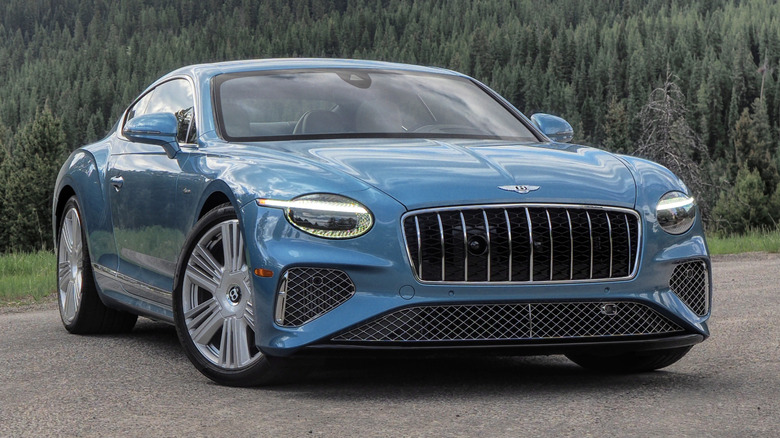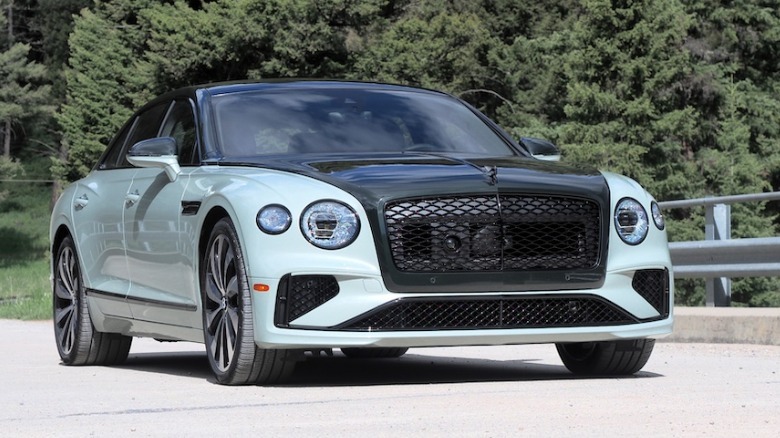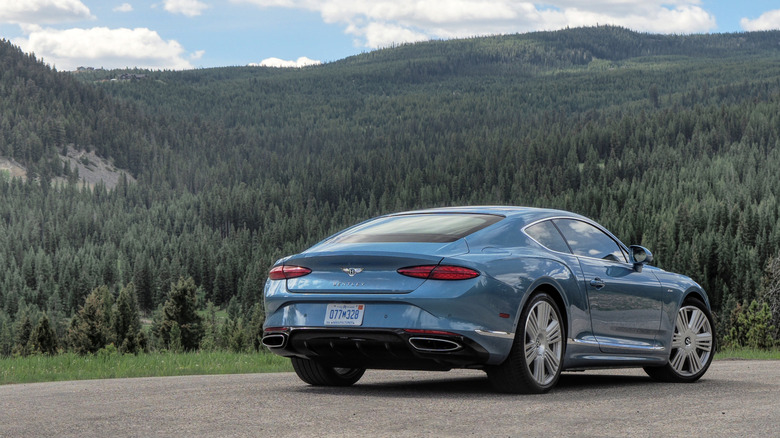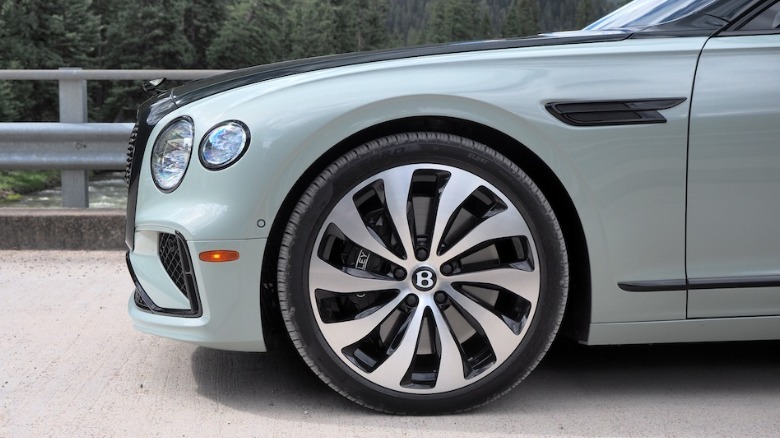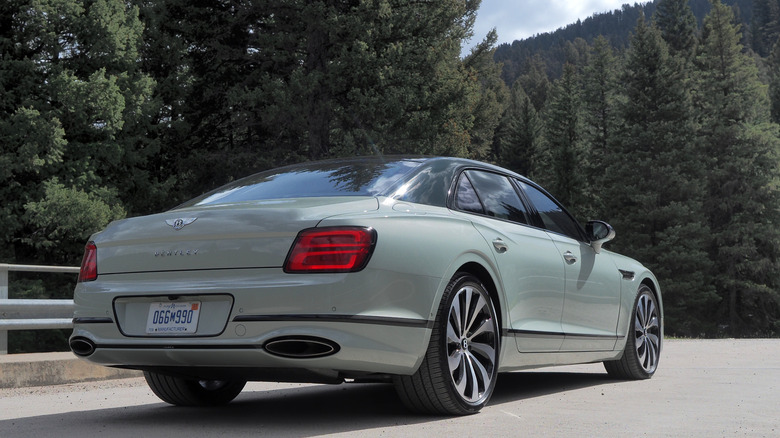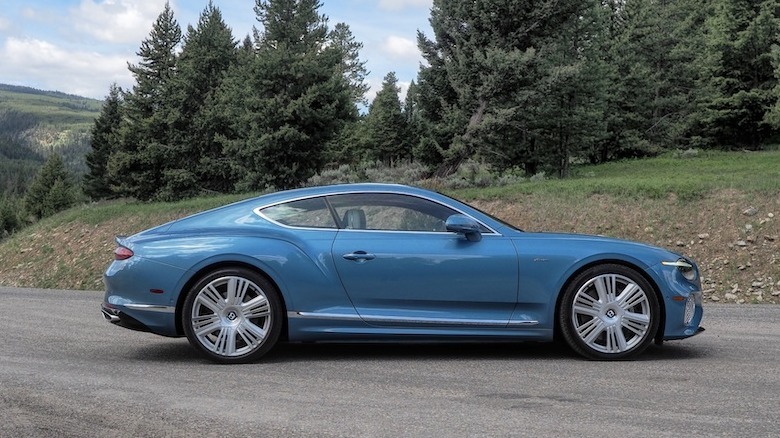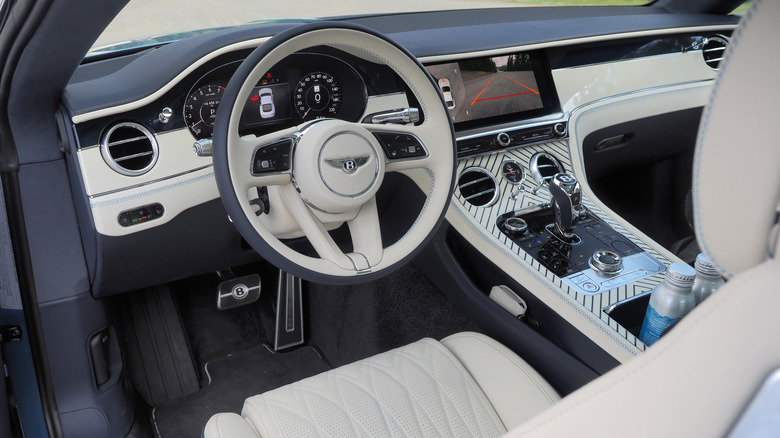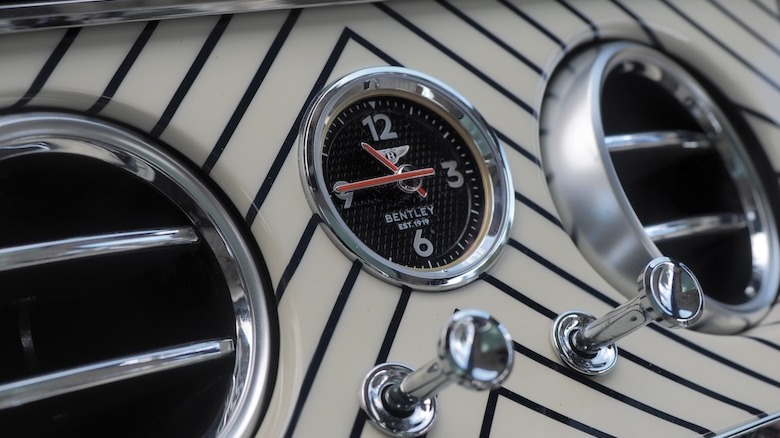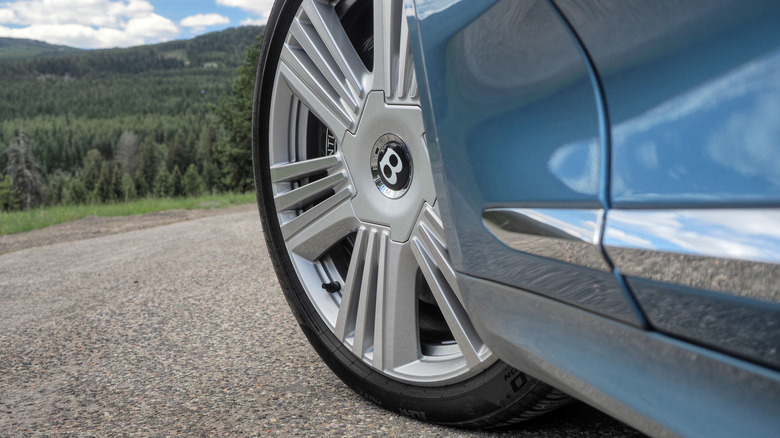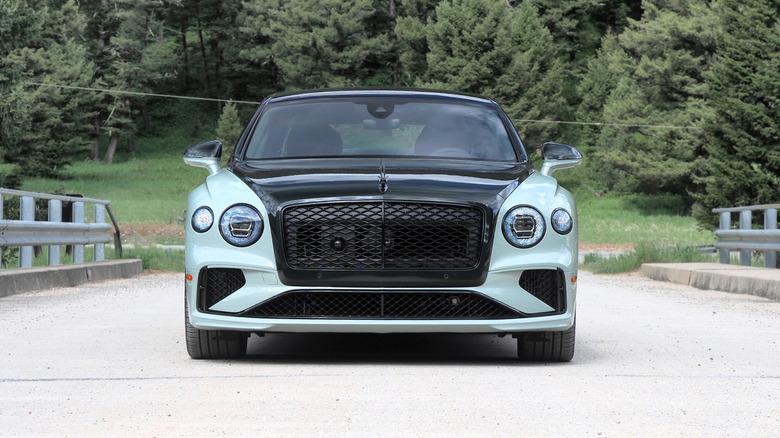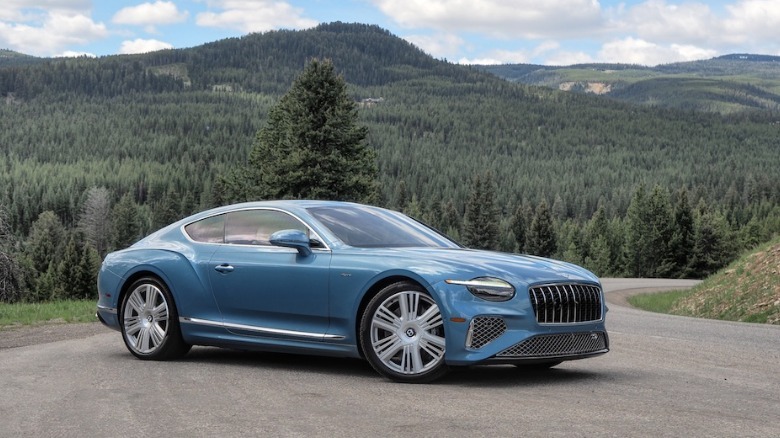2026 Bentley Continental GT & Flying Spur First Drive: Cheapest Hybrid Is Hardly Humble
You could've forgiven Bentley for turning up its British nose at electrification. After all, few automakers made vast, 12-cylinder engines quite so central to their identity as the W12 was to Bentley's line-up. Instead, the luxury car company was one of the first to embrace the idea of going EV, even if the current 2035 deadline for that is a little later than first intended.
For all the demise of the W12 is a disappointment — from an engineering perspective, if not an ecological one — it's tough not to be excited about what replaces it. As we found in Bentley's new Continental GT (and its GTC convertible sibling) with the Ultra Performance Hybrid drivetrain, the combination of a potent 4.0-liter twin-turbo gas engine with a punchy electric motor makes for a compelling plug-in hybrid.
Compelling enough — and expensive enough — that Bentley has cooked up a second version, for those who don't quite need 771 horsepower and 738 lb-ft of torque. The High Performance Hybrid takes the same strategy but here delivering 671 horsepower and 686 lb-ft of torque to the new Flying Spur, Continental GT, and Continental GTC. 0-60 mph takes as little as 3.5 seconds, Bentley says: slower than the Ultra version, sure, but not by much.
When you're not flogging your British steed, the 25.9 kWh battery is good for 50-51 miles of electric-only driving, albeit on the WLTP cycle. Bentley doesn't have U.S.-cycle range estimates yet, though the Ultra-toting Flying Spur Mulliner is also rated for 50 miles WLTP but 30 miles on the EPA's test. Figure on something similar here.
Still big, handsome, and oozing exclusivity
The Continental — whether coupe or convertible — looks just as slick in these new base and Azure forms as it does in the existing Speed and Mulliner specs. That's not to say there aren't style differences, at least if you're eagle-eyed. The Azure's extra brightwork, including vertical vanes on the front grille, are probably the most obvious identifiers, though it also has glitzier headlamps than the Continental GT Speed.
The GT and GTC offer 18 standard colors, while the convertible has the choice of different roof finishes, too. 22-inch wheels are standard, with sizable ventilated iron brakes standard — grabbed by 10-piston front and four-piston rear calipers — and carbon ceramic brakes optional.
Meanwhile, I suspect I could make a solid argument for why the Flying Spur is the perfect answer to the one-car-garage challenge. Effortlessly handsome, imposing and memorable, it also has a grace that lavish four-door rivals often squander in their hunt to look "modern" and "different." Long-distance road trips are nothing to Bentley's big sedan, but find some twisting roads, and it's astonishingly nimble, too.
More focused driving dynamics as standard
All-wheel steering now being standard helps there, along with twin-valve dampers, and Bentley has made the electronic limited-slip differential (eLSD) — which nudges power between the rear wheels depending on traction and other factors — standard-fit, too. Still all-wheel drive, these fourth-gen cars can now push up to 85% of total torque to the rear axle.
Even without the most potent iteration of the new V8 PHEV drivetrain, these are darned fast cars. For the Flying Spur, 0-60 mph arrives in 3.8 seconds, Bentley says, a mere half-second slower than the Speed or Mulliner versions. The Continental is even quicker: 0-60 in 3.5 seconds for the coupe, and 3.8 seconds for the droptop. The Speed and Mulliner versions do it in 3.1 and 3.2 seconds, respectively, for hard and soft top.
I'll confess, I had more time in the Bentayga Speed — Bentley's decidedly silly new performance SUV — than I did in any of these new High Performance Hybrids. Nonetheless, it doesn't take long to be charmed. There's still that tide of effortless power, the electric torque filling in nicely until the twin-turbo V8's peak lands at 2,300 rpm. Shifts from the eight-speed dual-clutch transmission barely register. These are fast, smooth, refined cars that can still wow with outright pace and handling when required, without demanding drivers settle for discomfort when the mode dial flips from Sport to the all-rounder Bentley setting.
Inside, budget and imagination are the only limits
Inside, the world remains your oyster when it comes to amenities and trim (well, assuming your oyster is also stuffed with cash). For the sedan, there are four-seat or 4+1 configurations, 15 different leather options on the standard list, eight wood veneers, a trio of "technical" trim finishes like carbon fiber, and two-tone options. The Continental also has 15 hides, then eight veneers and a dual-veneer option.
All that hand-finished loveliness surrounds a 12.3-inch central touchscreen — which optionally spins around to alternatively show a trio of analog gauges or an unbroken veneer — running an updated version of Bentley's infotainment. There's a digital driver display, and generally very nice switchgear: custom stalks, a perfectly-weighted drive mode dial, and fluted organ-stop style controls for the vents. If I were to be fussy, I might call out the steering wheel switchgear which, though dressed up a little, is still reminiscent of Audi's controls.
As standard, the core models get straight fluted leather stitching, whereas the Azure has a diamond pattern and a new 3D diamond pattern on the door trim. "Standard" is the key word, there: chat with Bentley's Mulliner team, the division responsible for taking client budgets and turning them into customizations galore, and they'll eagerly fill your new ride with just about any color hide, wood, metal, or other material you can imagine. It can vastly change the feel in the process.
Let's be serious: You don't need the Ultra
From a rational, sensible perspective, the High Performance Hybrid option ought to be more than enough for any car buyer. Nobody can look at 671 horses and 686 lb-ft of torque and seriously declare them to be lacking figures. Whether propelling the two- or four-door Bentleys, the powertrain is every bit as excessive as you'd expect.
Reality, of course, is not so pragmatic. There is need and then there is want, and the latter is only exacerbated when you're trying to hold your own against other, uber-wealthy drivers. I don't doubt the allure of a-bit-more-power has, and will continue, to sway shoppers once the oneupmanship potential of their new Bentley has been considered.
Perhaps, though, your showboating centers more on style than speed. To call the new core or Azure versions of either the Continental or the Flying Spur "cheap" would be a bald-faced lie, but they're certainly more affordable starting points if your main goal is to cook up something heavily customized with the Mulliner team.
Bentley isn't announcing final U.S. pricing for the cars yet: that'll come closer to their official launch later this year, hopefully when some of the confusing dust has settled on the tariffs issue. Expect a decent delta between these High Performance Hybrid models and the Ultra Performance Hybrids, which start from around $306k for a 2025 Continental GT Speed, $336k for the GT Speed convertible, and $276k for a 2025 Flying Spur Speed.
2026 Bentley Flying Spur and Continental verdict
Bentley's electric ambitions — though for now more heavy on the hybrids — don't stop at gas-electric blends. Driving all iterations of the fourth-generation PHEVs, I couldn't help but imagine what the first fully-electric car from the automaker will feel like. Not just minimal vibration from the combustion engine, but none at all; not just 332 lb-ft from the electric motor before the V8 kicks in, but the full (and likely to be fully profligate) output of whatever e-drive Bentley chooses to install.
That first EV won't be a Flying Spur or a Continental: we already know it'll be a new model line, not a riff on a current car. A smaller SUV than the Bentayga, falling short of the all-important five meter (16 feet 4 inches) length mark so as to make it eligible for on-street parking in Europe. We'll see it first in 2026, with production kicking off the following year.
Gung-ho as I am about electrification, I still think there's a place for plug-in hybrids. While I'd point those in the market for the superlative all-electric sedan over to Lucid's Air (and probably in Sapphire form, if we're talking Bentley budgets, here), the well-balanced duality of the Flying Spur and Continentals' V8 PHEV is difficult to argue with. As always in these segments far beyond the grasp of most drivers, it's mostly ego not omissions that'll push you to the even more expensive versions.
